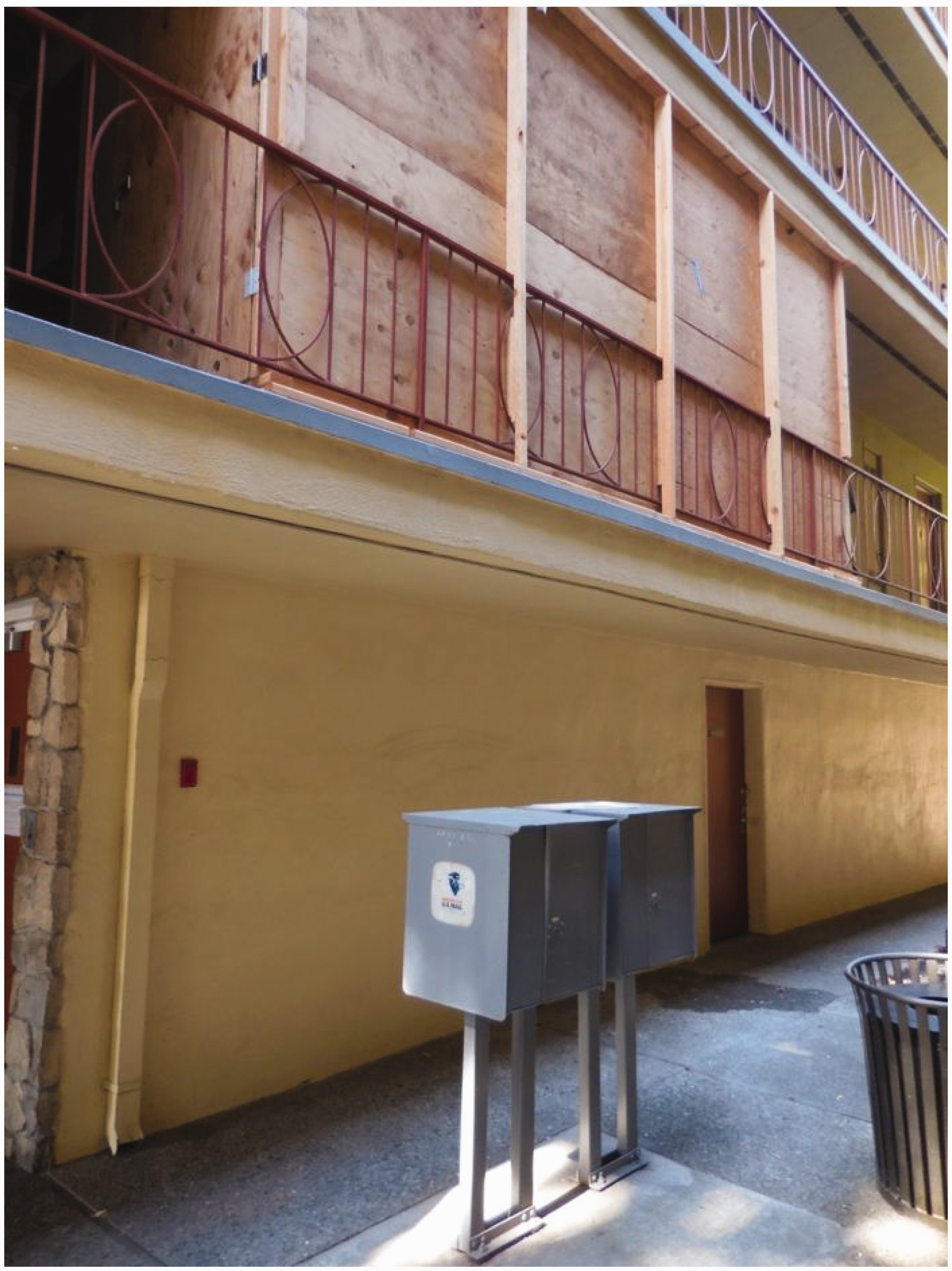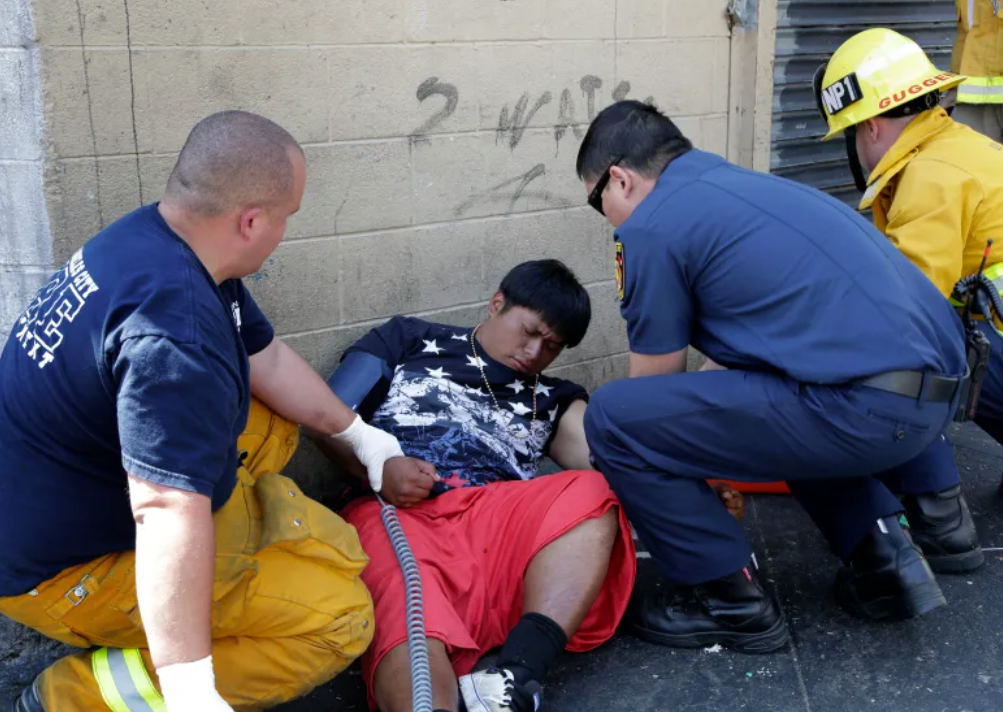The Silent Victims of the Opioid Crisis: The Urgent Call for Legislation and Training
Opioid Crisis: A Nationwide Catastrophe
We are living in an opioid crisis which has had a devastating impact on the United States. This epidemic has not only effected those struggling with addiction as well as their loved ones, but also effects those tasked with working around these lethal chemicals. Not often discussed are the professionals and innocent bystanders who have been hurt or killed. This article aims to shed light on this new growing hazard.
Lethal doses of Fentanyl and Carfentanil found inside a contaminated property.
A Ripple Effect on Society
Use of opioids such as fentanyl, can devastate more than just the individual user. Not only do these potent drugs wreak havoc on the user, but they also contaminate the places where they are manufactured, stored, or even simply used. This creates an invisible but very real threat to anyone who might unknowingly come into contact with these environments.
As someone who has been working in this field for several years, I believe the tragic instances of secondary exposure happen more frequently than we realize, largely because the dead can't speak for themselves. Consider the heart-wrenching stories we've heard recently: In New York, a two-year-old lost her life after being exposed to fentanyl at her nursery, and three young classmates were also exposed but thankfully survived. In another incident, a 19-month-old died from fentanyl exposure while staying in an Airbnb.
Red Tagged Property Due to Fentanyl Contamination
Closer to home in Los Angeles, two construction workers lost their lives while performing maintenance work inside an apartment. While it was presumed they died from second-hand accidental exposure to fentanyl, some speculation arose that they may have consumed the drugs intentionally. Too frequently, the narrative skews toward a more easily digestible story to avoid wrongful death lawsuits, suggesting that adults found in these situations must have willingly consumed these dangerous substances. I have witnessed firsthand that this version of events is both simpler to convey and more cost-effective for the parties involved when such tragedies occur.
But in the case of young children, there's no room for speculation; the fact is undeniably horrifying. And that's why it's crucial to recognize that people—both young and old—are losing their lives in situations where they have not willingly exposed themselves to these lethal substances. These innocent bystanders become silent victims of an epidemic they didn't choose to be part of. This should compel us to fully investigate the circumstances surrounding these deaths and to adapt our public safety measures to protect the most vulnerable among us.
Protecting All Workers on the Frontline
It's a disheartening reality that, while first responders are often provided with specialized training to handle these types of hazardous situations, many non-sworn workers are left vulnerable due to a lack of similar resources. Firefighters, EMTs, and police officers are trained to recognize and mitigate the risks of fentanyl and other hazardous substances. They are equipped with personal protective equipment (PPE) and educated on how to proceed safely in contaminated environments. However, the same cannot be said for numerous other individuals who work in high-risk environments, yet lack the formal training and equipment to protect themselves adequately.
Before diving into our urgent call for training, it's important to acknowledge the lives already tragically affected by this crisis. One particularly heartbreaking story that motivated me to take action was that of a house cleaner who died after cleaning a home where a recreational drug user had fatality overdosed. She left behind two young children, their lives forever altered by this devastating loss. She had simply been doing her job, unaware of the invisible dangers that lurked within the contaminated environment she was working in. Her story is a grim testament to the urgent need for widespread education and awareness.Every member on my team was personally affected and saddened by this tragic loss of life.
The team packed up and moved on to the next cleanup. This time they were tasked with cleaning a hotel room where a recreational drug user had recently succumbed to fentanyl. While my team was in the middle of the cleanup, EMTs rushed into a room adjacent to where they were working to respond to another overdose, likely due to fentanyl.
As my team watched the whole event unfold, they witnessed a hotel maid walk into that very room, outfitted only in her regular uniform and equipped with everyday cleaning supplies. She was oblivious to the invisible but potentially deadly hazards that permeated the room and she began her routine cleaning.
She gathered the towels and sheets that had been in close contact with the overdose victim, clutching them tightly against her chest in order to gather as many linens as she could carry. She then proceeded to dump these potentially contaminated linens into her laundry cart, stationed outside the room. As the sheets landed at the bottom of the cart, a puff of air visibly billowed upwards toward her face.
Members from my team immediately intervened, halting her actions to educate her about the life-threatening risks of secondary fentanyl exposure. We explained how easily fentanyl particles could be inhaled, especially in powder form, posing a severe risk to her. Her expression morphed from one of confusion to one of shocked realization as the gravity of the situation fully dawned on her.
These back-to-back incidents were my motivation to educate non-sworn personnel on the hazards of fentanyl. Over the following year, I collaborated with a variety of experts and developed a comprehensive fentanyl awareness training program aimed at vulnerable workers in sectors like hotel management, waste disposal, and auto body shops repairing stolen vehicles in which illicit drugs have been discovered. This was not just a moral obligation but a necessity, as I came to the realization that these groups of workers are completely unaware of the lethal hazards to which they may be exposed.
Legal and Ethical Considerations
California is at the forefront of tackling fentanyl-contaminated property cleanup through its Methamphetamine or Fentanyl Contaminated Property Cleanup Act, but most states lag in providing comprehensive regulations. As discussed, the drug is alarmingly potent and poses significant risks to users and bystanders alike. While cleanup costs can be exorbitant, ranging from $5,000 to $50,000 for a small site, there is still a lack of detailed federal and state guidelines on decontamination procedures. Most existing policies focus on protecting first responders but overlook other workers who may be at risk. The pressing nature of the fentanyl crisis calls for immediate, comprehensive guidelines for property cleanup to safeguard public health. Click the following for Summary of State Laws regarding fentanyl cleanups, state by state.
Legislation and Financial Relief
California's existing laws can serve as a blueprint for other states. States should also specify what constitutes a "safe level" of contamination. In California, for instance, the guideline is that levels should be "non-detectable," but this leaves room for interpretation regarding the sensitivity of the tests used to measure contamination. Therefore, it is crucial that legislation clearly defines what is considered a safe level prior to reoccupying a room.
There is a growing consensus that legislation needs to account for varying degrees of contamination and public risk. For example, a site where an individual overdoses from an intact pill is a significantly less of a hazard compared to an area where fentanyl powder is dispersed. Consequently, laws should be flexible enough to cater to these variances, prescribing different levels of required cleanup based on the specific conditions.
From my experience, there's also an urgent need for mechanisms that provide financial relief to property owners caught in these situations. Often, they bear considerable financial burdens for cleanup activities, even when they had no prior awareness of illicit drug use occurring on their property. Many property owners with homeowners' insurance are shocked to learn not only the high costs of a professional cleanup but also that their insurance policies frequently do not cover such events. These financial pressures often lead property owners to make risky choices. All too often, I encounter property owners who, lacking the necessary funds for professional cleanup, are faced with the dilemma of either tapping into their life savings or attempting the hazardous cleanup themselves. These decisions can result in the site not being safely cleaned and properly tested for safe habitation. Therefore, it is critical to establish financial relief options that help ensure effective and timely cleanups, while safeguarding both property owners and the wider community.
Michael A. Polkabla's Case Study on Cleanup and Assessments
In his groundbreaking case study, "Establishing Standards for the Assessment and Decontamination Cleanup of Opioid-Contaminated Properties," Michael A. Polkabla provides invaluable insights into the complexities of opioid contamination. His research highlights the pressing need for standardized approaches, not only for the benefit of first responders but also for other workers who might be exposed to such hazards. The case study underscores the complexity required to properly clean a contaminated property, an issue that aligns closely with the objectives of this article. For a comprehensive understanding of the assessment and decontamination of opioid-contaminated properties, Polkabla's case study is a must-read.
Conclusion
The far-reaching effects of the opioid crisis necessitate a concerted effort from all sectors. Inspired by the invaluable research of experts like Michael A. Polkabla, this article aims to contribute to the ongoing dialogue. We need comprehensive guidelines and legislation to ensure the safety of all those potentially affected by the opioid epidemic. Whether it's first responders, property owners, maid cleaning services, or body shop workers, a multi-pronged approach is critical in creating a safer environment for everyone. Landlords renting their properties should also review their homeowners' policies to determine if they are covered for fentanyl cleanups. Additionally, there should be a push to provide fentanyl awareness training to non-sworn companies and their employees on the hazards of secondhand fentanyl exposure, as they are often the ones who inadvertently find themselves at risk. Together, we can create a roadmap for a more secure and informed community.
About the Writer:
Jon Schibsted is a veteran Safety Professional with a distinguished career spanning over 15 years as a hazmat specialist. His expertise extends to specialized training in weapons of mass destruction, including chemical, blister, radiation, and nerve agents. Certified as an Emergency Medical Technician (EMT), Jon owns Safety Services Management, a busieness specializing in fentanyl contamination cleanup and comprehensive training programs to safeguard staff from accidental fentanyl exposure. His extensive experience encompasses roles as a Health and Safety Manager in the private sector and as a former Firefighter and Hazmat Specialist with the Los Angeles Fire Department. Jon's depth of expertise serves as a robust foundation for ensuring the highest levels of safety across a range of environments.






